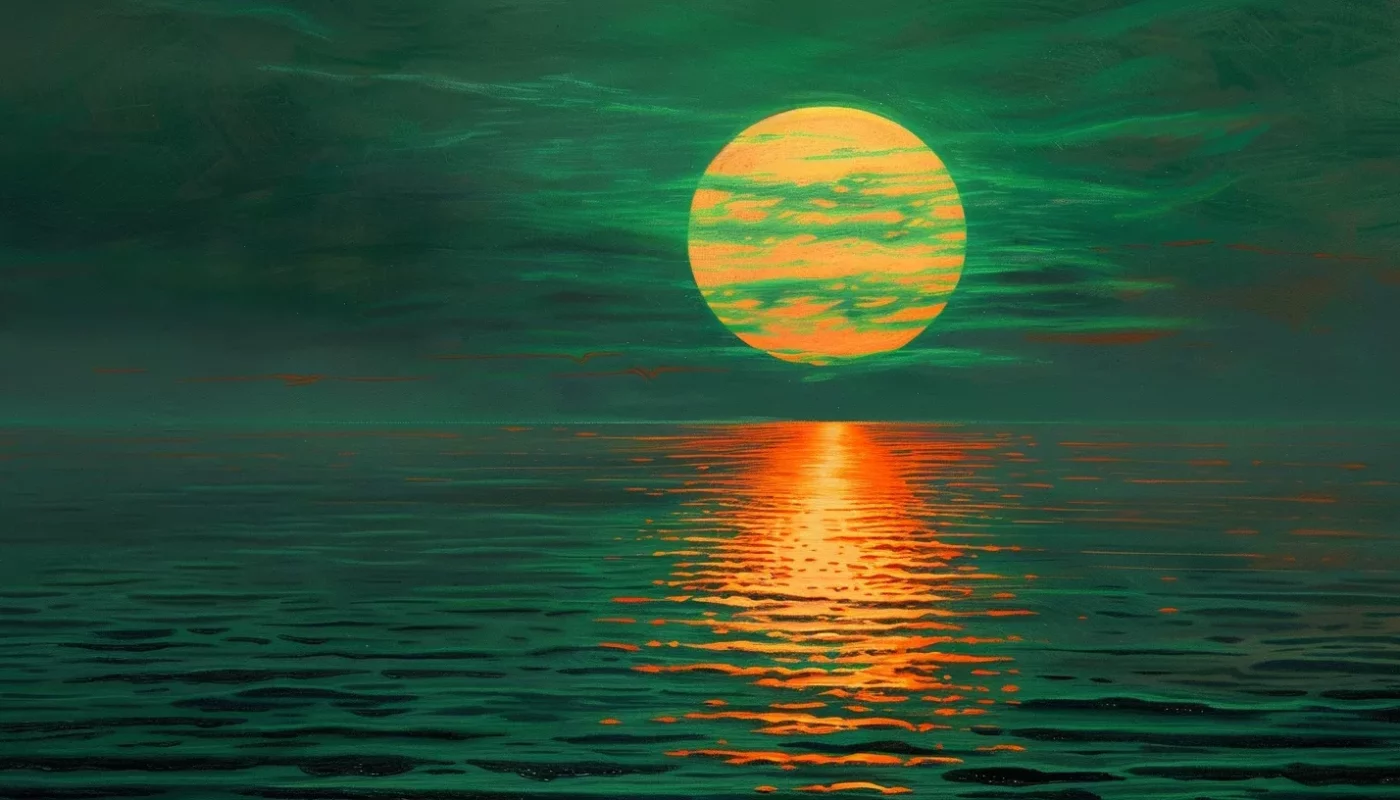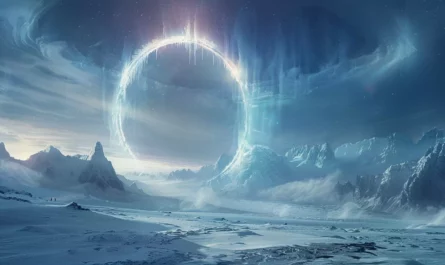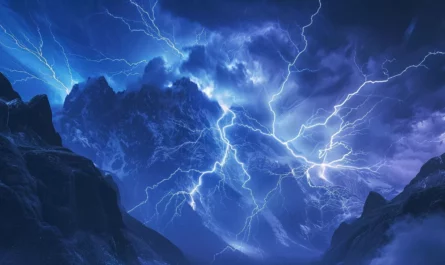Imagine standing on a beach, watching the sun go down. Suddenly, a brief green light flashes. It’s a rare natural wonder that captures the heart of those who see it. Green flashes happen when the sun is nearly hidden, showing best on clear days. You might see it from a high place or across the sea.
The reason behind green flashes is really cool. It happens when the atmosphere changes the sun’s light, making green rays stand out to us. This change comes from light bending in the air, separating colors. It makes green stand out for a few seconds in a stunning way.
Want to catch a green flash? You’ll need the perfect setup. Look for a clear day and a sharp horizon, like at the sea or on a mountain. Keep your eyes on the horizon as the sun sets. But be sure to protect your eyes by not looking until the last moment.
Green flashes show us the beauty of nature. Though rare, they remind us to care for our planet. Let’s work to keep the environment clean. That way, others can also experience the magic of green flashes in the future.
How to See a Green Flash at Sunset
Seeing a green flash at sunset is truly a sight to behold. For this, you’ll need clear skies and an unblocked view of the horizon. Also, it’s very important to protect your eyes. Only look towards the sun when it’s almost hidden.
Green flashes are often seen from beautiful beaches or the open sea. This is because you can easily see the horizon there. They are also visible from high points like mountains or tall buildings. If you wake up early, you might catch a green flash at dawn too. It’s an amazing spectacle.
Extra Tip:
To increase your chances of seeing a green flash, find a spot with a clear horizon line. A beach or a high spot works well. Don’t forget to bring binoculars or a zoom lens camera to catch every detail.
The Science Behind Green Flashes
Green flashes at sunset or sunrise are fascinating. They make us appreciate nature’s wonders even more.
These flashes happen because of how light bends in the air. As the sun goes down, its light travels through more of Earth’s atmosphere. This bending spreads out the colors in light.
The green part of sunlight gets bent and stands out, making a green flash. This happens when the air acts like a prism. It’s a sight that sharp observers often catch.
Not all light colors bend the same way. The green rays bend in a special way because of the sun’s angle. This makes the green stand out from the red, creating the green flash.
To really get why green flashes are so cool, you need to know about light bending and the air. They remind us of the amazing things nature shows us.
The Science Behind Green Flashes Explained
When the sun is just above the horizon, light skims through the air at an angle. This makes the air separate the sunlight into colors like a prism. As the sun sets, the green light gets pushed apart from the other colors. This makes the stunning green flash that people love to watch.
| Type of Light | Color | Description |
|---|---|---|
| Inferior-Mirage Flash | Green | An oval or flattened green spot above the setting sun, lasting 1-2 seconds. |
| Mock-Mirage Flash | Green | A thin, pointy strip of green light at the upper rim of the sun. |
| Sub-Duct Flash | Green | The upper part of the setting sun turns green for up to 15 seconds. |
| Green Ray | Green | A green beam of light shooting up or seen immediately after sundown. |
The science behind green flashes varies with the atmosphere and how light bends. Each kind of green flash offers a special view, making this phenomenon even more captivating.
Different Types of Green Flashes
Green flashes come in various forms, creating different amazing sights. There are mainly two common types: the inferior-mirage flash and the mock-mirage flash. The inferior-mirage flash shows up as a green oval or spot that stays for a short time above the setting sun. On the flip side, the mock-mirage flash gives a skinny, green line at the sun’s top edge.
Then, there’s the sub-duct flash, lasting up to 15 seconds, when the sun’s upper part turns green. Finally, we see the green ray, a beam of green light that shoots up after the sun goes down. Each type of green flash happens because of how light bends in the atmosphere.
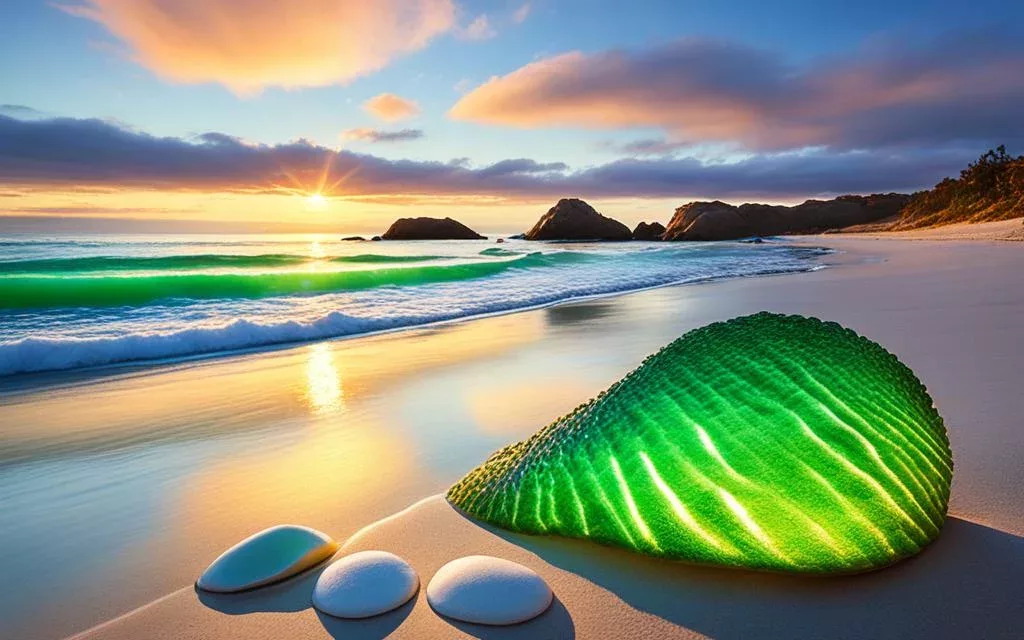
| Type of Green Flash | Description |
|---|---|
| Inferior-mirage flash | An oval or flattened green spot above the setting sun, lasting 1-2 seconds. |
| Mock-mirage flash | A thin, pointy strip of green light at the upper rim of the sun. |
| Sub-duct flash | The upper part of the setting sun turns green for up to 15 seconds. |
| Green ray | A green beam of light shooting up or seen immediately after sundown. |
Green Flashes on Other Planets
Green flashes are not just an Earth thing. They also happen on Venus and Jupiter, seen from our planet. These bright planets show the green flash at the horizon. You can find videos and photos online of these amazing moments. It shows that the rules of physics are the same across our solar system.
Venus shines bright as the “Evening Star” or “Morning Star.” It stands out in the sky at certain times of the year. People often think it’s a UFO or a bright star. Because it’s close to Earth, we can see cool events like green flashes. Jupiter, the biggest planet, also shows these green flashes. These moments reveal the beauty and mystery of our universe.
Image:
Summary of Green Flashes on Venus and Jupiter
| Planet | Green Flash Phenomenon |
|---|---|
| Venus | Venus shows off green flashes at sunset and sunrise, just like Earth. |
| Jupiter | Jupiter, shining brightly, can also have green flashes seen from Earth. |
Green flashes on other planets remind us we share experiences and phenomena across the solar system. Even from afar, these events link us to the vast universe. They spark wonder and make us curious about what lies beyond.
Conservation and Green Flashes
Green flashes are an amazing natural sight. They remind us to look after our planet. We see them over the ocean, showing the need to protect marine ecosystems and fight ocean pollution.
Fireflies, which can produce green flashes, are facing habitat loss. Activities like city building, cutting down forests, and farming harm their homes. This affects their life cycle and their glowing communication, harming ecosystems.
Many firefly species in the U.S. and Canada are at risk. Losing their habitats, light pollution, and climate change are big threats. Fireflies need certain conditions to survive. Changing their habitats can harm them greatly.
To save fireflies, we must try hard to keep their homes safe, reduce light pollution, and address climate change. Projects that include both scientists and the community help to track and understand firefly numbers. This helps us know more about how they are doing.
If we protect firefly habitats and teach others their value, we can preserve nature’s beauty for the future. Together, we can make sure fireflies and their homes are safe. This way, we’ll keep enjoying green flashes and our planet’s diversity.
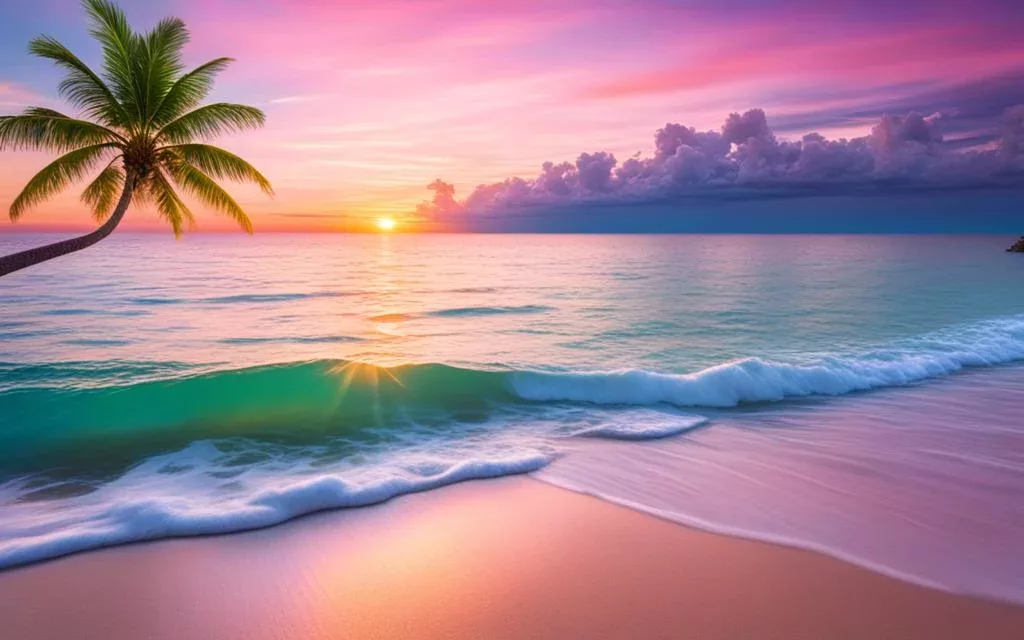
Green Flash in Popular Culture
The green flash has caught many people’s attention. It even shows up in Jules Verne’s 1882 book, “The Green Ray”. This story made the green flash well-known. It got readers interested in this natural wonder.
Also, the green flash appears in a famous movie. It’s in “Pirates of the Caribbean: At World’s End”, made by Disney. Here, the green flash adds mystery and magic to the story.
This natural event’s role in stories and movies makes it even more interesting. The green flash continues to fascinate and inspire people everywhere.
Capturing Green Flashes in Photos
Getting a photo of a green flash is tough. Their brief appearance makes them hard to catch. Yet, some photographers have snapped amazing pictures of this phenomenon during sunsets. These photos highlight the bright green color and the spellbinding effect of green flashes.
To take the perfect green flash photo, photographers use special skills and tools. The key is timing. Green flashes only show up for a second when the sun goes down. Photographers have to wait for just the right moment to catch the intense green light.
“Green flashes are like beautiful secrets that the sky reveals to those who are patient and attentive.” – Photographer
These stunning photos show how beautiful green flashes are. They take us to those special moments when the sun sets in a burst of green light.
Tips for Photographing Green Flashes:
- Find a spot where you can clearly see the horizon.
- Get there early to set up and get to know the light.
- Use a tripod to keep your camera steady.
- Try different settings to capture the green flash’s true colors.
- A wide-angle lens can catch the whole scene of the sun setting.
- To avoid shaking the camera, use a remote shutter or timer.
Patience, skill, and an eye for detail allow photographers to capture green flashes. Their photos fill us with wonder. They show us nature’s extraordinary beauty.
Conclusion
Green flashes are amazing sights seen during sunset or sunrise. They show a beautiful flash of green or blue light as the sun sets or rises. This stunning view happens when light bends in the air, separating green from red colors.
To see a green flash, you need a clear view without anything blocking the horizon. Good spots are over the sea, above clouds, or on mountain tops. Pilots flying west have a great chance to witness these moments. Most green flashes are due to specific atmospheric conditions, but some rare types exist too.
Green flashes are rare and show the beauty of our world. They can also happen on other planets like Venus and Jupiter. As we enjoy these beautiful moments, it’s important to remember to take care of our environment. Protecting our oceans and natural places helps make sure future generations can also see these amazing sights.
Learn more about green flashes here.

